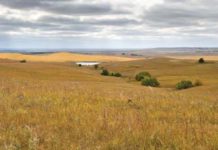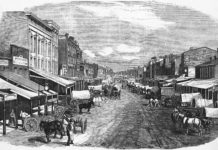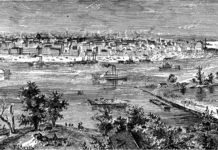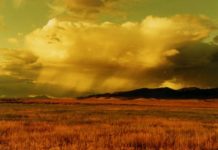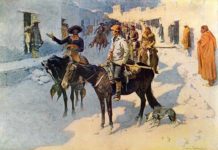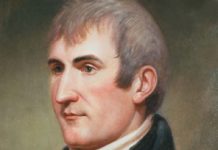By Monday, June 13, 1836, if Eliza Spalding could have viewed St. Louis again she might not have considered it such a moldy and sinful place after their travels thus far. Rough and crude as that western city might have been it would have surely been a welcome site of civilization.
On that date, the missionary party and the fur caravan were treated to a semblance of civilization. On that day they reached what is commonly known as Fort Laramie. Even though at the time it was still called Fort William after mountain man William Sublette, in time it would be known as Fort Laramie. Narcissa Whitman
Mrs. Spalding expressed her delight to be at the fort when, in her diary on June 15, she noted how good it was to see buildings again. From Elizas writings we also know that the party camped near the fort and expected to remain there for several days. No doubt she, like Narcissa Whitman, took this opportunity to wash cloths for the first time since leaving Liberty, Missouri. They were, also, delighted to have very comfortable chairs to sit in which were bottomed with buffalo skins.
They probably would have reached the fort sometime sooner had it not been for being stalled by a herd of some 5,000 buffalo. Henry Spalding related the incident in a letter home as a pleasant surprise. He also wrote in the same letter Tell your dear children all, I remember them. Have seen 5,000 buffalo at once probably. Hope they will all become missionaries. Spaldings missionary expectations may have been high but it is certainly hoped that he was expressing his desire that the children would become missionaries, not the buffalo as he had indicated.
Fort Laramies existence began in 1834 in the Sioux country where the Black Hills commence. The surrounding area was where the Cheyenne and Arapaho traveled, traded and hunted. It was a natural location for a fur trading post. Missionary Cornelius Rogers, who traveled to Oregon Country in 1838, left a brief description of the fort in his July 3 letter written from the camp of the American Fur Company during the 1838 rendezvous near the Wind River Mountains at the junction of the Popo Agie and Wind Rivers.
Rogers described the establishment, then Fort William, as a stockade enclosure of about 200 feet square. There were buildings located around the inside of this square that left the middle open for work.
The list of historical persons noted to have, at one time or other, visited the fort reads like a well-cast production of the highest caliber.
Amongst the very first was Robert Stuart. Considered to be the first white person to visit the site that lay at the mouth of the Laramie River, he and his traveling companions camped there on December 22, 1812 on their return trip to St. Louis from Fort Astoria, Oregon. Stuart is accredited with discovering the route that would later become the Oregon Trail.
The cast continues with Jacques Laramie, a French fur trapper. Though little is know of this man it seems he was killed by Indians on the stream that would take his name. The characters only get better with time which is proven by the entrance of Jedediah S. Smith who passed through the area, leading William H. Ashley’s expedition into the Rocky Mountains in 1823. Smith was accompanied by another who is returning to the fort. Thomas Fitzpatrick, who purchased Fort William with his associates, Jim Bridger and Milton Sublette in the spring of 1835, has now, in 1836, stepped upon the Laramie stage again with his fur brigade and the missionaries. In 1836 Fort William was again sold, this time to the American Fur Company.
Prior to Fitzpatricks purchase of the fort Robert Campbell and William Sublette, who had formed a partnership in 1832 to compete in the fur trade, selected this junction of the North Platte and Laramie Rivers for their fur trading post, calling it Fort William.
And now, not only do Narcissa Whitman and Eliza Spalding have the distinction of being the first white women to visit the fort, the entire missionary party were the first to take a wagon overland to Oregon.
On June 19 the missionaries rejoiced in a quiet and restful Sabbath. Eliza says it is the first they have experienced since the 8th of May. Under the shade of a few trees near their camp, Reverend Spalding held religious services to a large assembly. But too soon the missionaries respite from the woes of travel were over.
On June 21 they left the fort. They were now some 2,800 miles from their eastern homes. Their next major stop of any length would not come for another 400 miles. And then it is dubious as to whether it would be a restful stop. The occasion for their halt would be the annual gathering and carousing of the mountain men; an occasion referred to as rendezvous.



